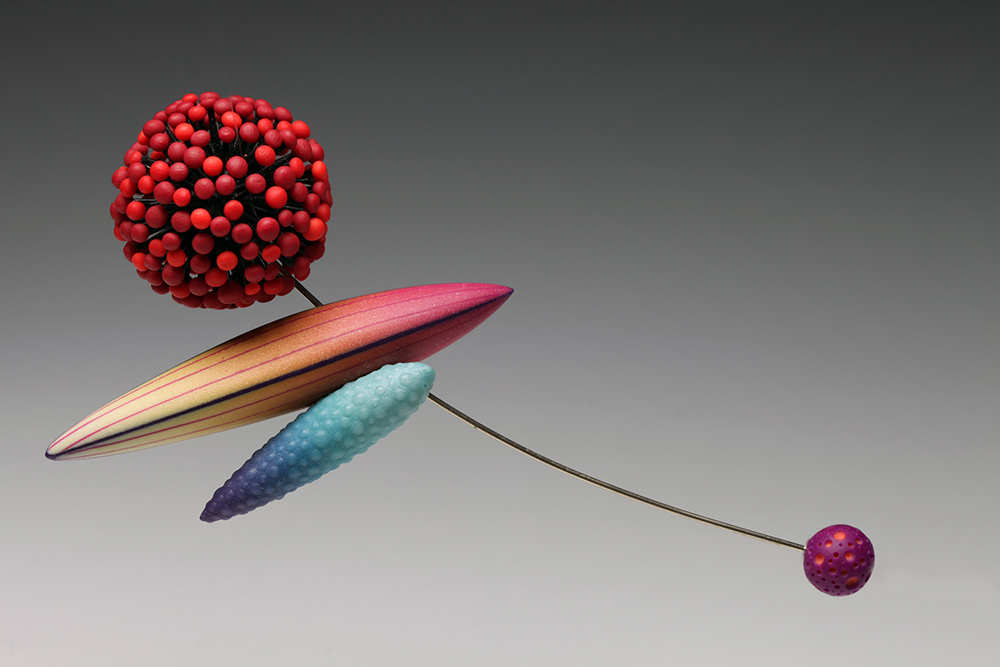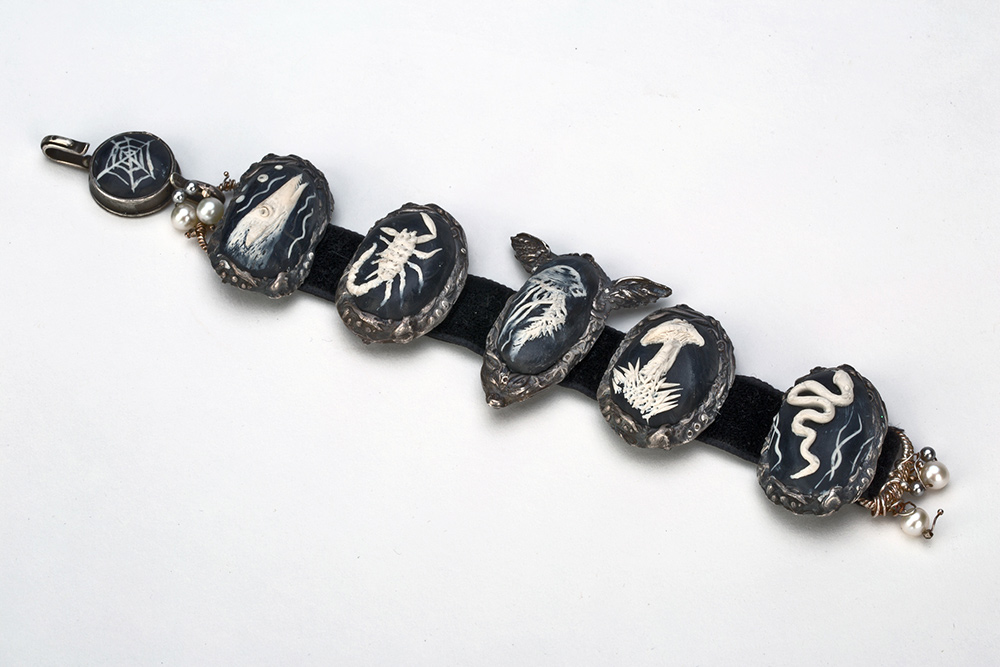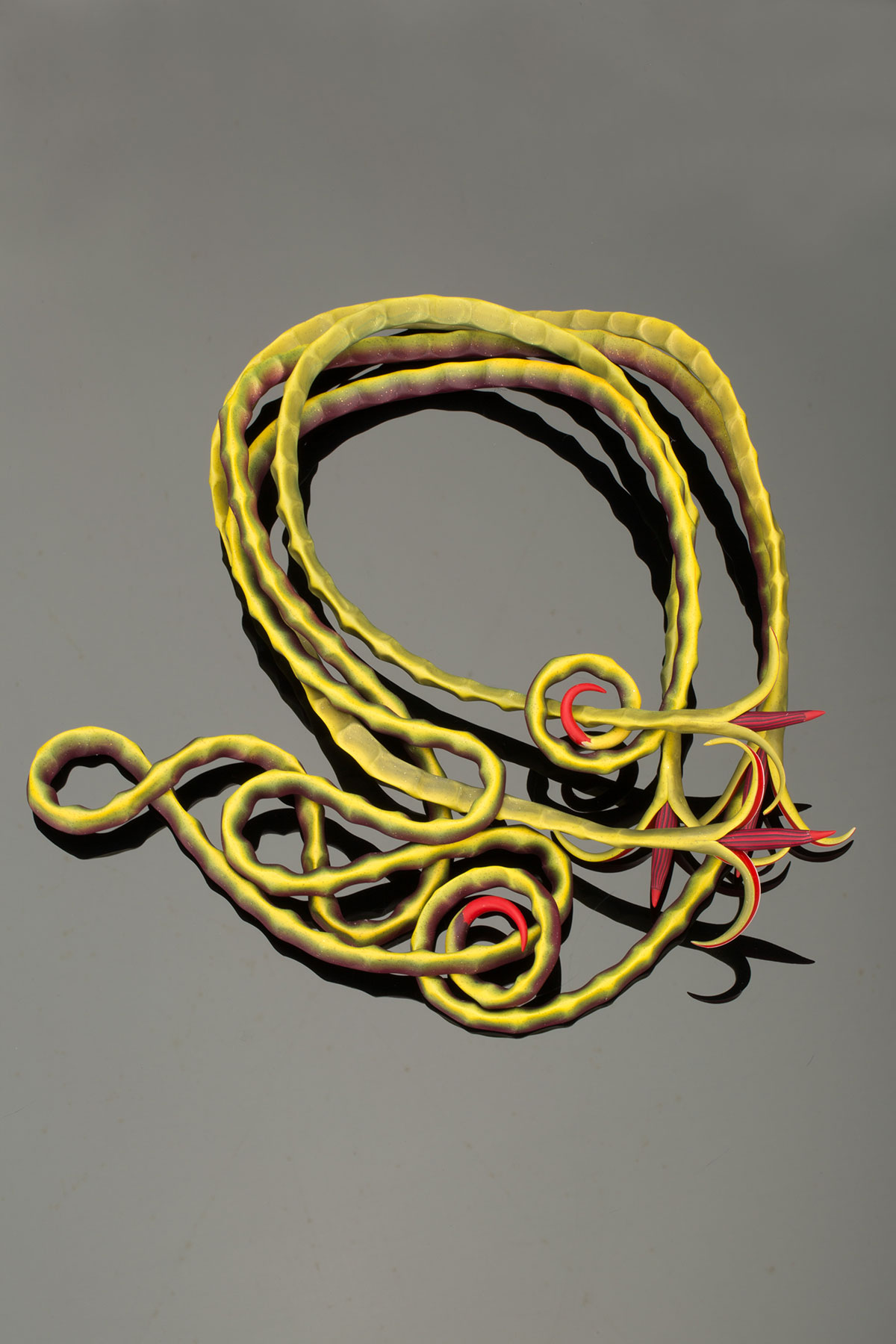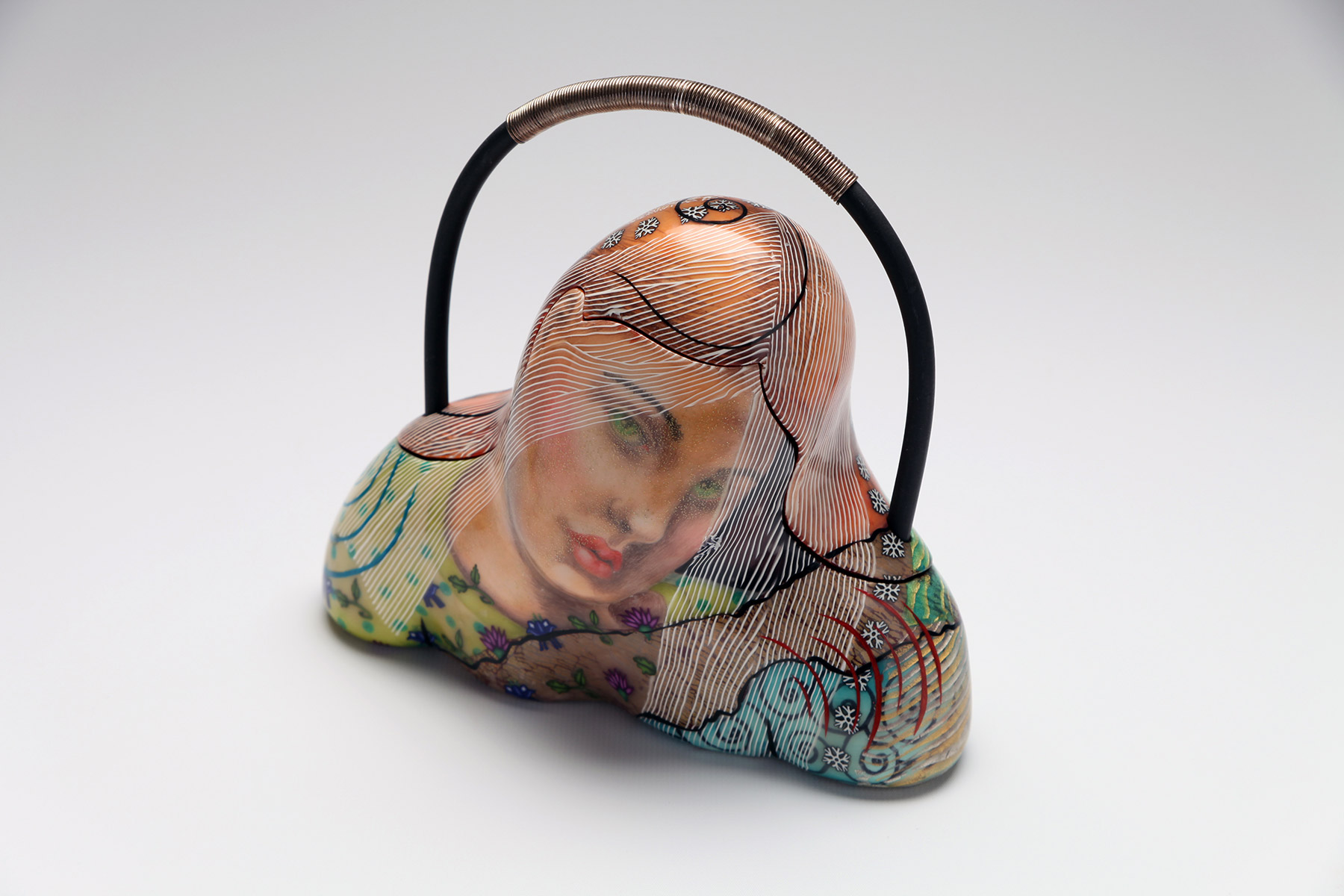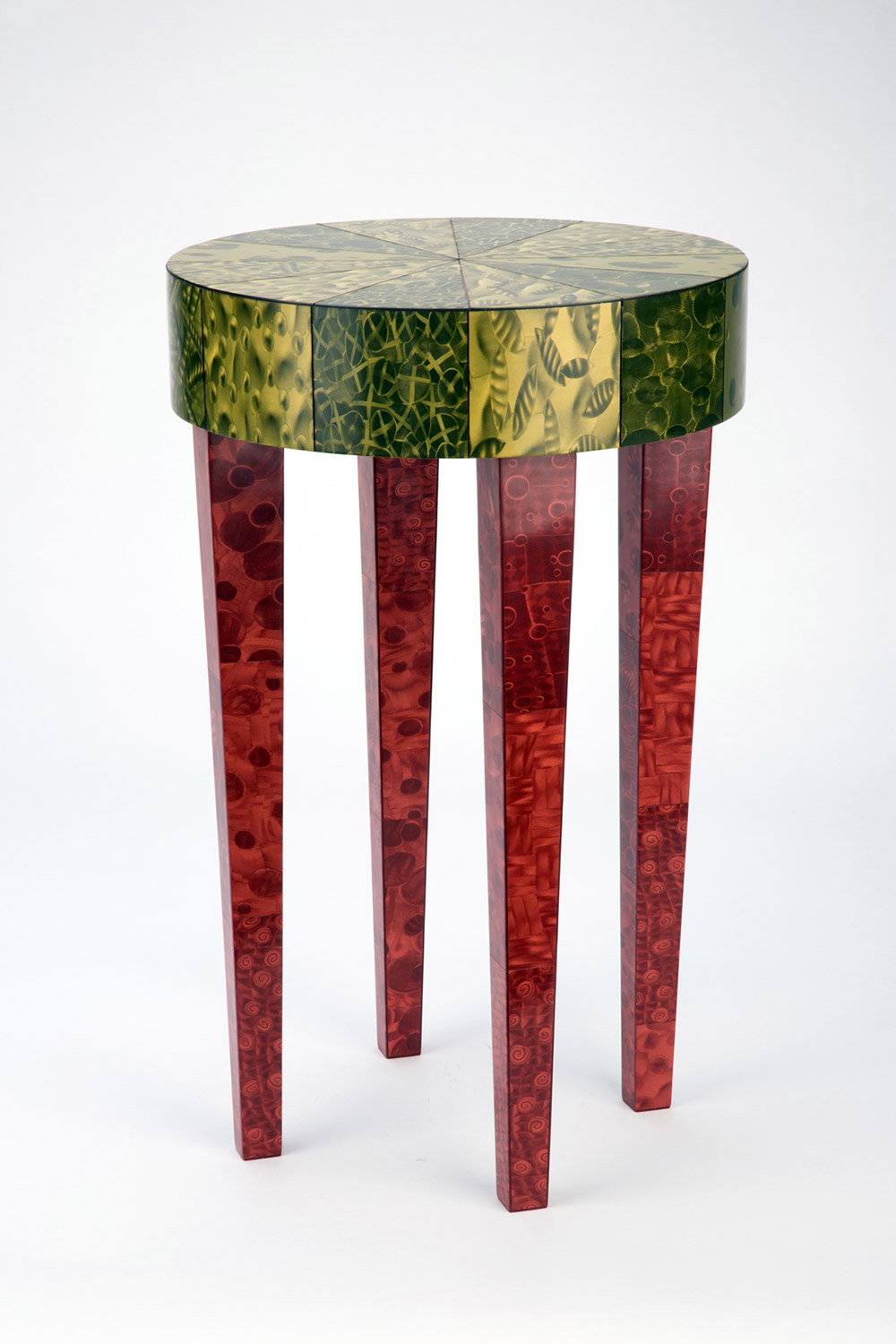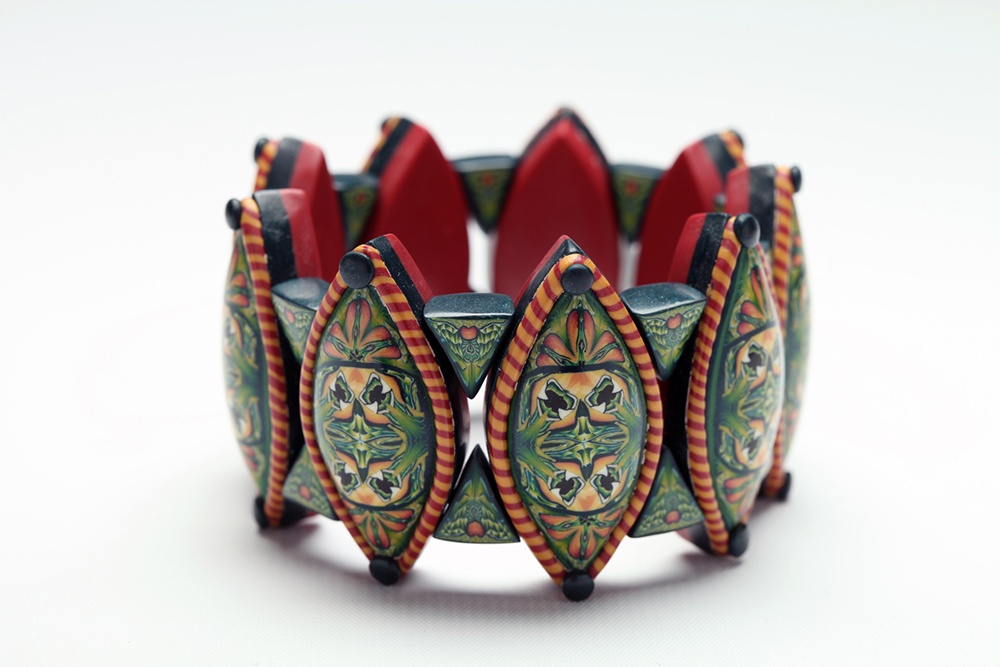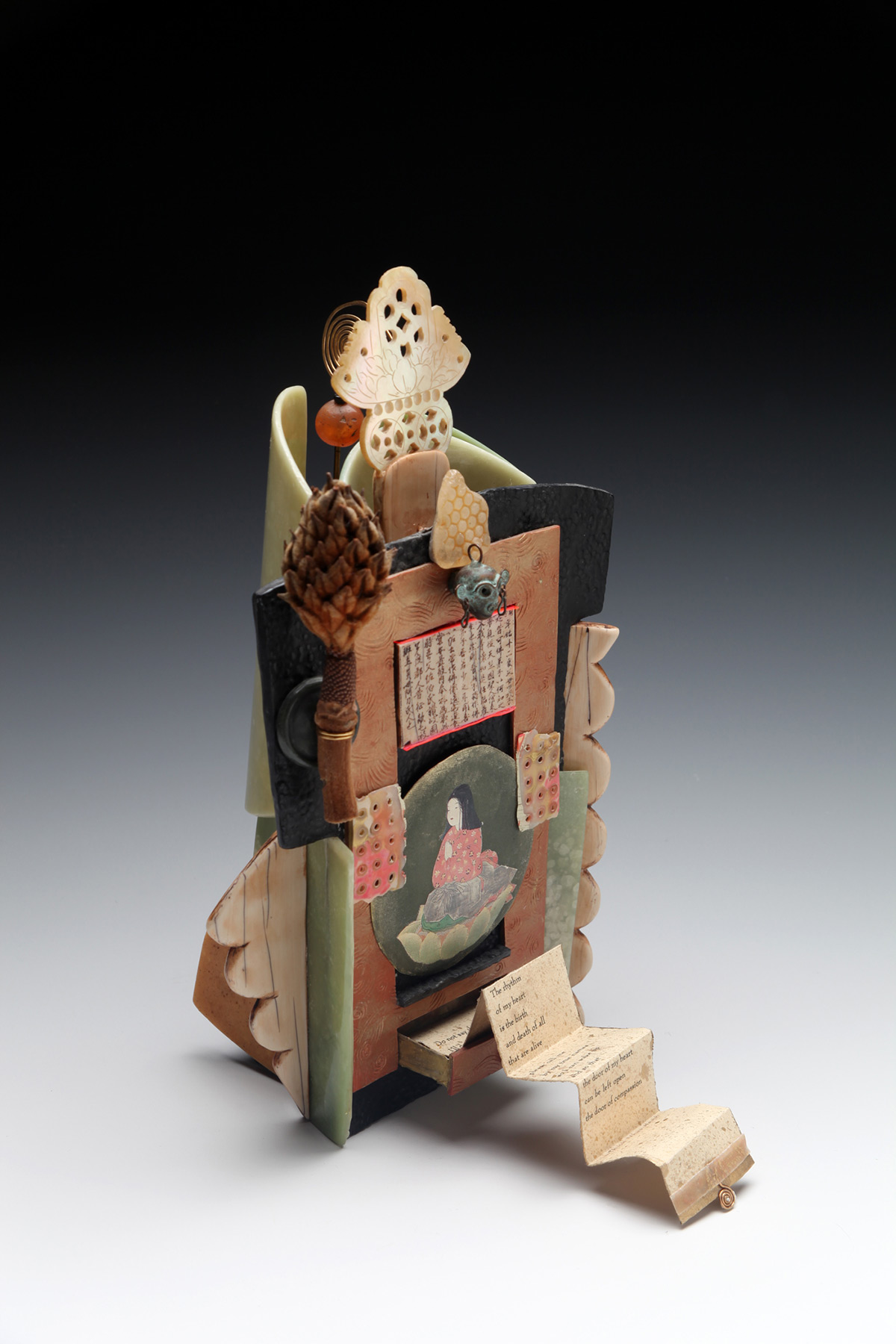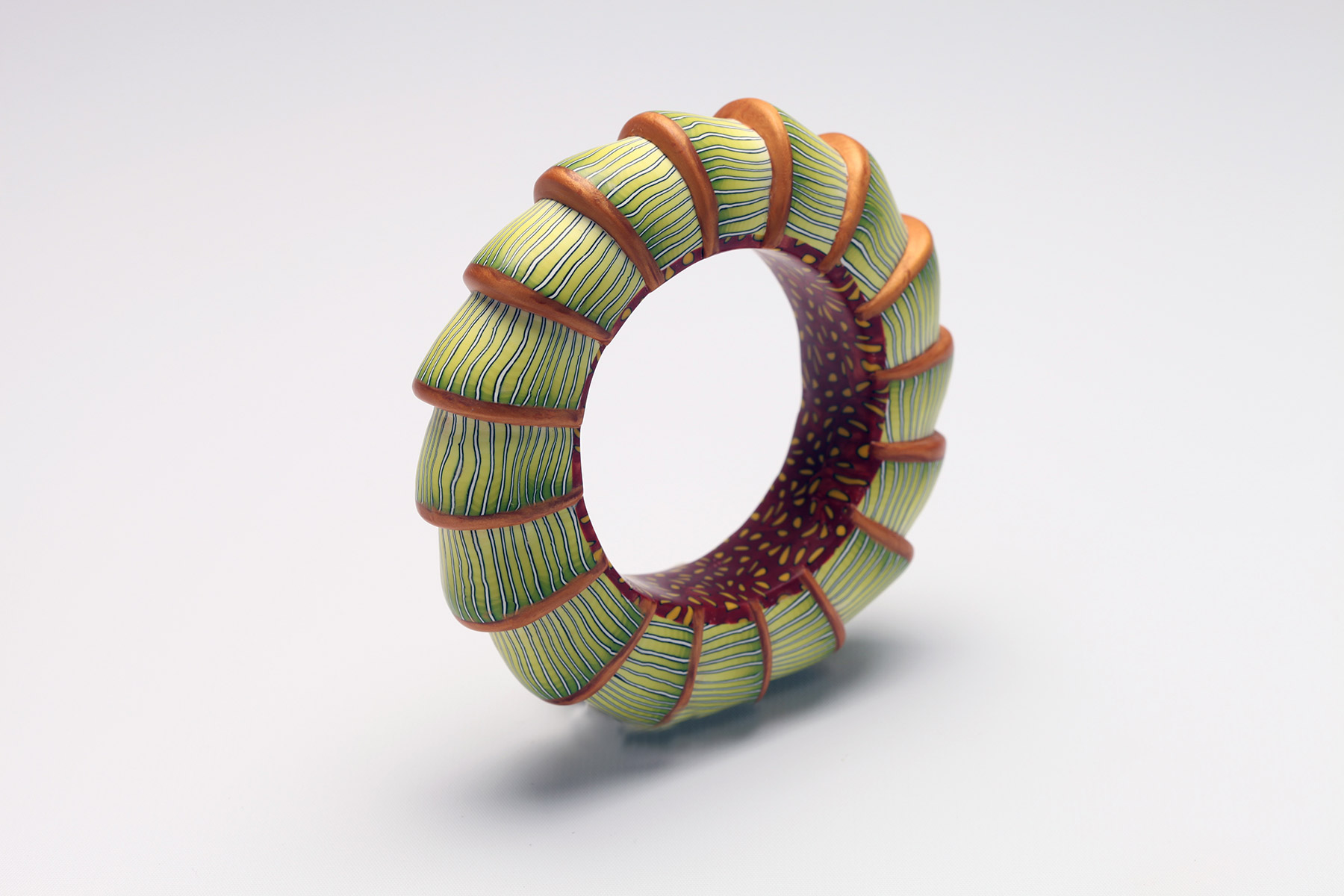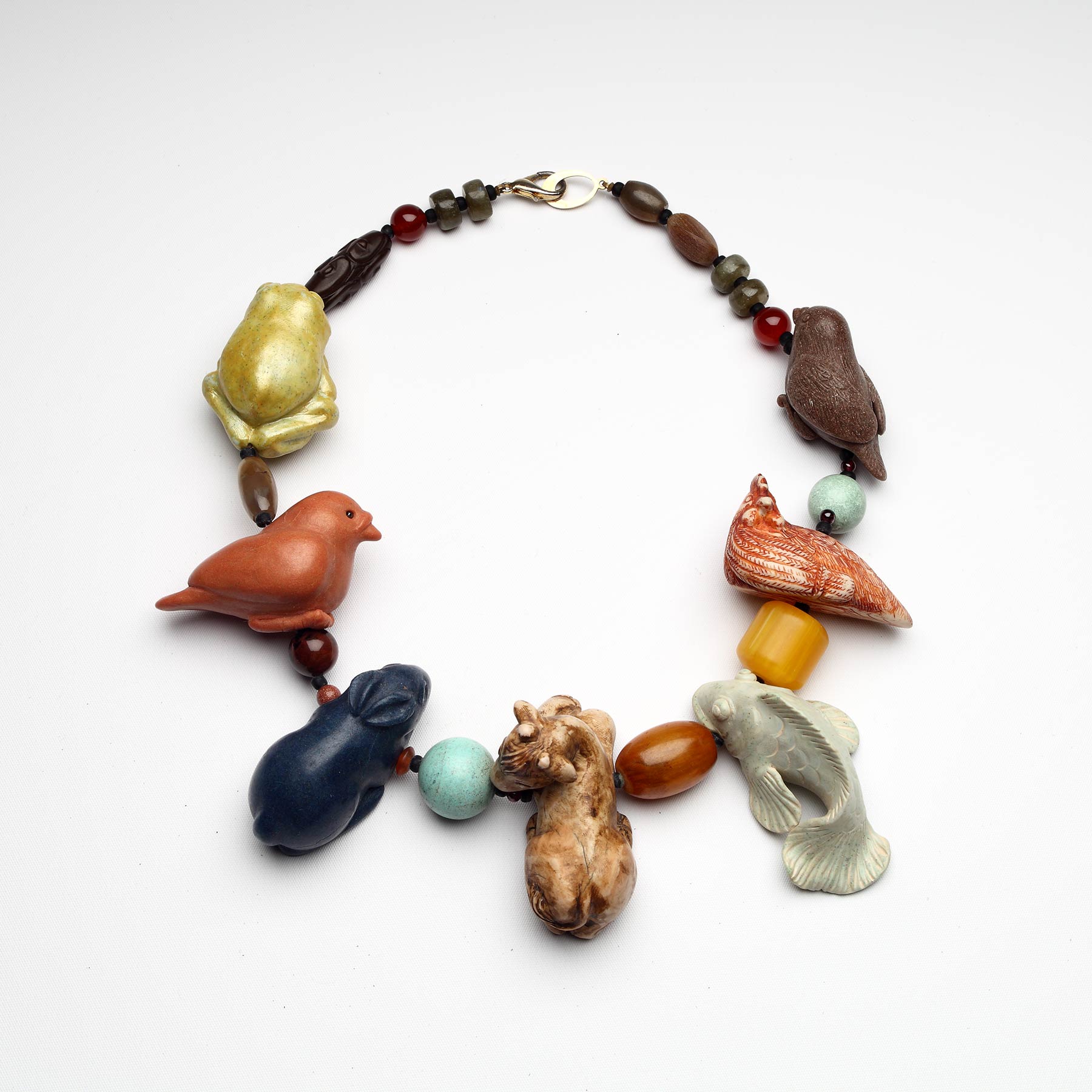Polymer Collection
When artist Elise Winters, founder of the Polymer Art Archive and organizer of the Polymer Collection Project (PCP), approached RAM in the 2000s as a potential recipient of artwork from the PCP, the museum began to envision a future filled with more artworks made of polymer. Polymer, a plastic-based compound used to make modeling clays, is better known by brand names such as FIMO® or Sculpey®.
Of five institutions that were given work from the PCP, including the Museum of Fine Arts, Boston, and the Museum of Arts and Design in New York, RAM accepted the largest number of works. In doing so, RAM established a holding of national importance that further underscores the museum’s role as a leader in collecting and exhibiting polymer art.
While art jewelry comprises the biggest portion of the polymer holdings, there are also examples of sculpture, furniture with polymer veneers, and vessels. Recent gifts have introduced new artists to the collection and expanded upon existing bodies of work by incorporating different types of objects or broadening the scope of years represented. RAM exhibitions regularly include works made of polymer, either from the collection or as loans.
In 2011, in support of these interests, the Racine Art Museum organized Terra Nova: Polymer Art at the Crossroads, a major exhibition featuring over 200 works made of polymer. Primarily comprised of pieces that had been gifted to RAM, Terra Nova emphasized the development of polymer as an expressive medium for artwork in recent decades. In addition, RAM produced a book of the same name and hosted a symposium so that leading artists could come together to discuss the past, present, and future of the material. This symposium brought together leading artists to discuss the history and the future of the medium. A second symposium was held in 2014, reviewing what had happened in the field since the first gathering.
To support the content of Terra Nova, as well as function as a singular resource for the historical and philosophical dimensions of the polymer medium, a 140-page hardcover book written by Rachel Carren, Bruce W. Pepich, and Lena Vigna, was produced, offering different frameworks for understanding the innovations of polymer in artistic expression.
Below is a sample of RAM’s growing polymer collection
Stay in Touch
The Racine Art Museum and RAM’s Wustum Museum work together to serve as a community resource, with spaces for discovery, creation, and connection. Keep up to date on everything happening at both museum campuses—and beyond—by subscribing to our email newsletter:


